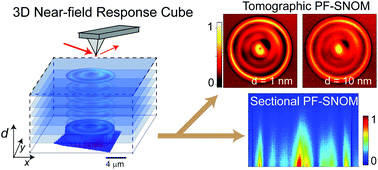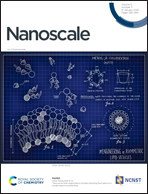Three-dimensional near-field analysis through peak force scattering-type near-field optical microscopy†
Abstract
Scattering-type scanning near-field optical microscopy (s-SNOM) is instrumental in exploring polaritonic behaviors of two-dimensional (2D) materials at the nanoscale. A sharp s-SNOM tip couples momenta into 2D materials through phase matching to excite phonon polaritons, which manifest as nanoscale interference fringes in raster images. However, s-SNOM lacks the ability to detect the progression of near-field properties along the perpendicular axis to the surface. Here, we perform near-field analysis of a micro-disk and a reflective edge made of isotopically pure hexagonal boron nitride (h-11BN), by using three-dimensional near-field response cubes obtained by peak force scattering-type near-field optical microscopy (PF-SNOM). Momentum quantization of polaritons from the confinement of the circular structure is revealed in situ. Moreover, tip–sample distance is found to be capable of fine-tuning the momentum of polaritons and modifying the superposition of quantized polaritonic modes. The PF-SNOM-based three-dimensional near-field analysis provides detailed characterization capability with a high spatial resolution to fully map three-dimensional near-fields of nano-photonics and polaritonic structures.



 Please wait while we load your content...
Please wait while we load your content...
